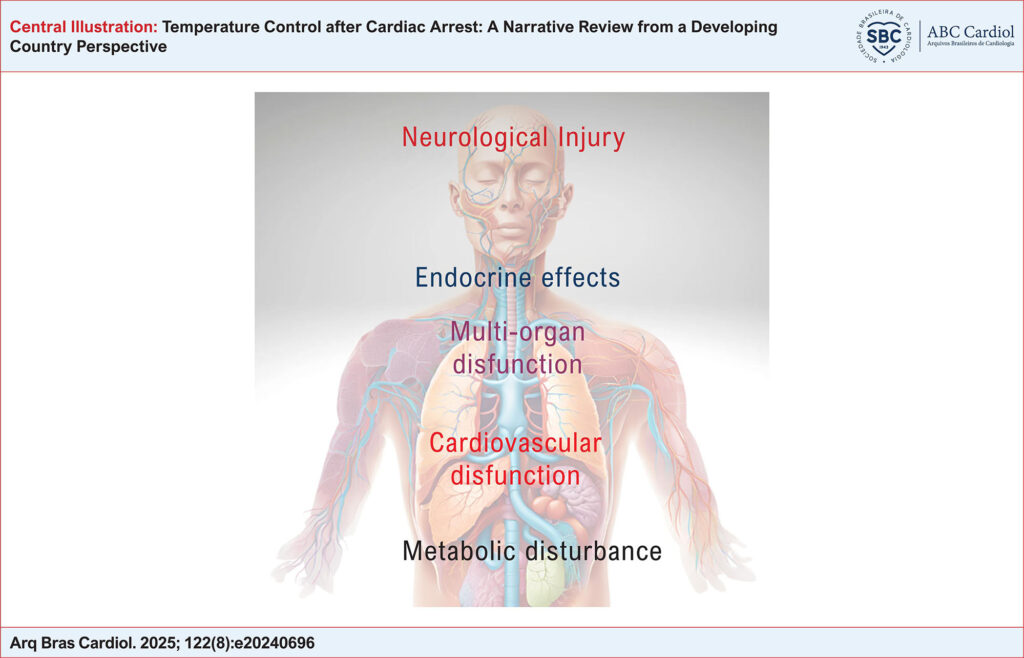Arq. Bras. Cardiol. 2025; 122(8): e20240696
Temperature Control after Cardiac Arrest: A Narrative Review from a Developing Country Perspective
Abstract
Targeted temperature management (TTM) is currently the only potentially neuroprotective intervention recommended for post-cardiac arrest care. However, there are concerns among the scientific community regarding conflicting evidence supporting this recommendation. Moreover, the bulk of trials included in systematic reviews that inform guidelines and recommendations have been conducted in developed countries, with case mix and patient characteristics that significantly differ from the reality of developing countries such as Brazil. Elevated body temperatures induce changes in the blood-brain barrier integrity and increase the brain’s demand for oxygen. They can cause imbalances in cerebral oxygen metabolism and blood flow, leading to inflammation and apoptosis. The primary aim of temperature control (TTM) is to control the secondary injury pathways by avoiding high temperatures. TTM, previously named therapeutic hypothermia, was first used to treat post-cardiac arrest brain injury in the 1950s. After that, we have been having relevant trials regarding TTM, with conflicting results as follows: TTM1, HACA study, TTM2, HYPERION study, and some meta-analyses kept the temperature management after a cardiac arrest in the discussion. In addition to individualizing the optimal target temperature for specific clinical scenarios and patient profiles, other aspects of high-quality TTM delivery are critical. The timing of target temperature achievement, duration of cooling, rewarming rates, and sedation practices have been evaluated in recent trials. In conclusion, it is crucial to determine the most effective TTM approach to achieve the best possible neurological outcomes while minimizing potential adverse effects.
163

